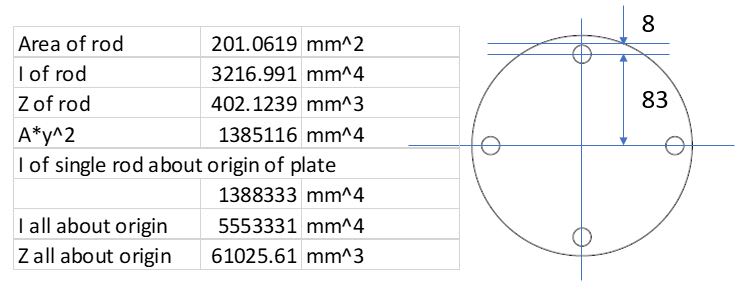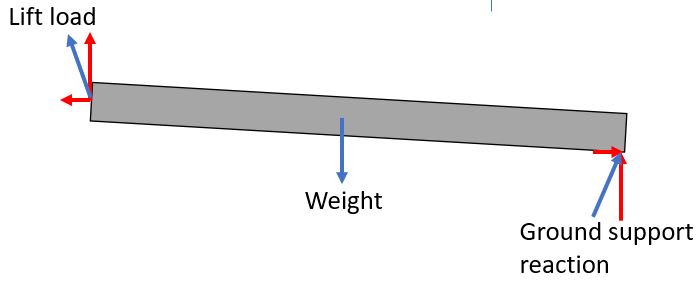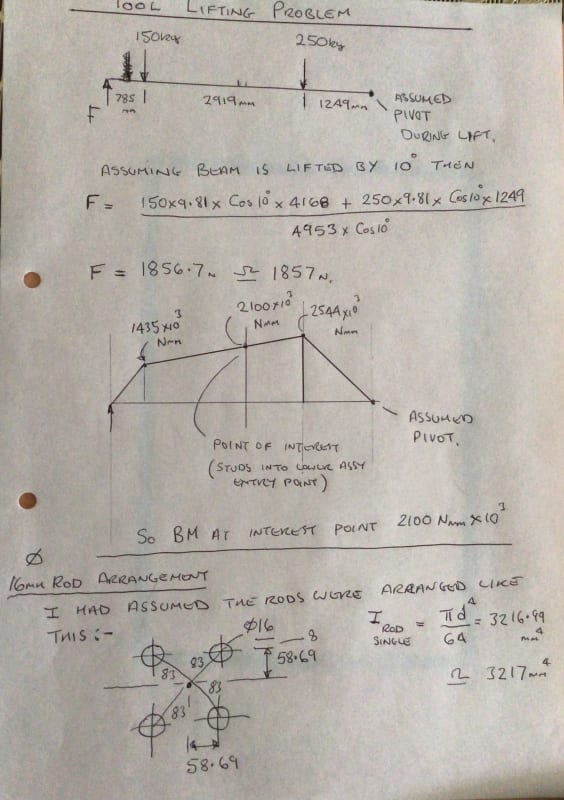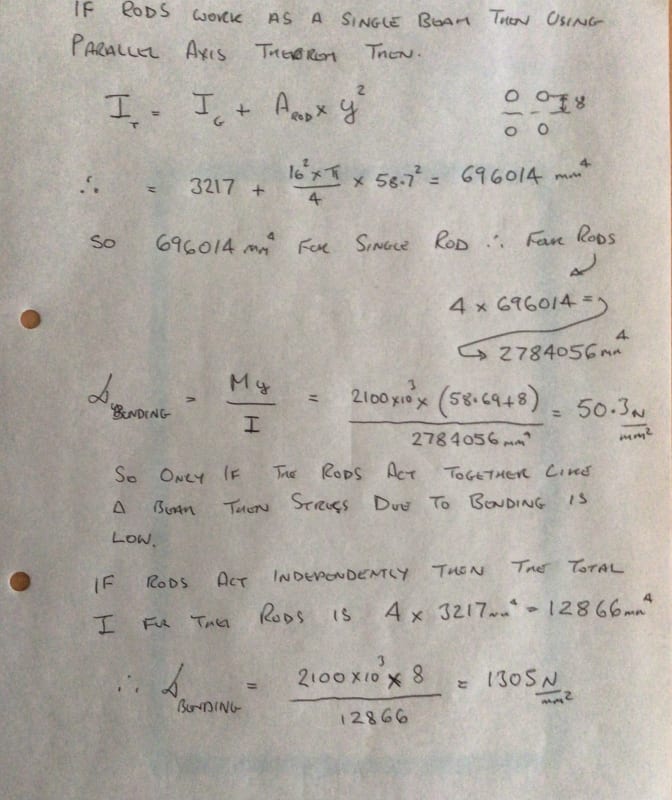Hello,
I was hoping to get some advice on how to calculate the strength of a new lifting interface. I have 2 existing tools that need to be joined together rigidly for lifting offshore. There are hydraulic lines between the 2 assemblies and access is also needed at the lifting interface for making these up. For this reason and because of space constraints I am looking to use 4 x 16mm OD threaded rods with a support plate in between.
The top assembly with a single lifting point on its end face is rigid and weighs 150Kg. The bottom assembly is also rigid and weighs 250Kg. I have attached a sketch which shows the arrangement. The support plate and lower support rods (359mm long) are already existing which is why the support plate isn’t in the middle.
So the complete assembly will be lifted from horizontal to vertical using the single lifting point on the top assembly.
I was hoping someone could offer some advice on how best to calculate the bending stresses in the rods?
I tried doing this as a simply supported beam assuming the supports are where the rods attach to the top and bottom assemblies. I took second moment of area as being the formula for solid bar and calculated the bending moment halfway between the support rods and support plate. The stresses are very high and I’m pretty sure my calculation is incorrect.
Calculations are not my strong point. I would appreciate any advice?
Thanks
Mark
I was hoping to get some advice on how to calculate the strength of a new lifting interface. I have 2 existing tools that need to be joined together rigidly for lifting offshore. There are hydraulic lines between the 2 assemblies and access is also needed at the lifting interface for making these up. For this reason and because of space constraints I am looking to use 4 x 16mm OD threaded rods with a support plate in between.
The top assembly with a single lifting point on its end face is rigid and weighs 150Kg. The bottom assembly is also rigid and weighs 250Kg. I have attached a sketch which shows the arrangement. The support plate and lower support rods (359mm long) are already existing which is why the support plate isn’t in the middle.
So the complete assembly will be lifted from horizontal to vertical using the single lifting point on the top assembly.
I was hoping someone could offer some advice on how best to calculate the bending stresses in the rods?
I tried doing this as a simply supported beam assuming the supports are where the rods attach to the top and bottom assemblies. I took second moment of area as being the formula for solid bar and calculated the bending moment halfway between the support rods and support plate. The stresses are very high and I’m pretty sure my calculation is incorrect.
Calculations are not my strong point. I would appreciate any advice?
Thanks
Mark

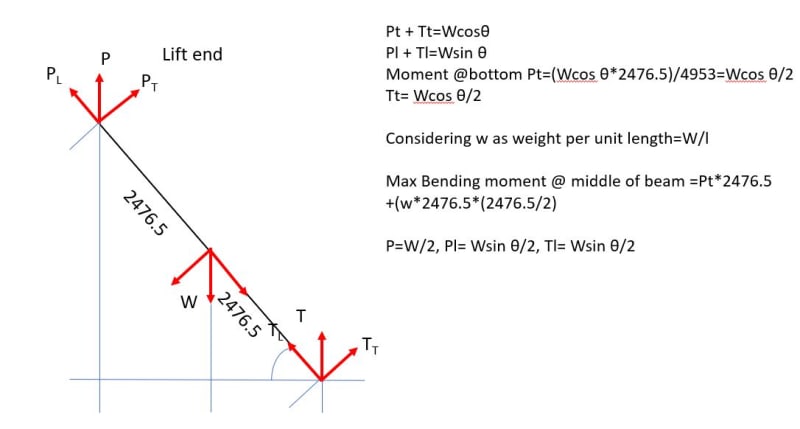

![[smile] [smile] [smile]](/data/assets/smilies/smile.gif)
![[bigsmile] [bigsmile] [bigsmile]](/data/assets/smilies/bigsmile.gif)

